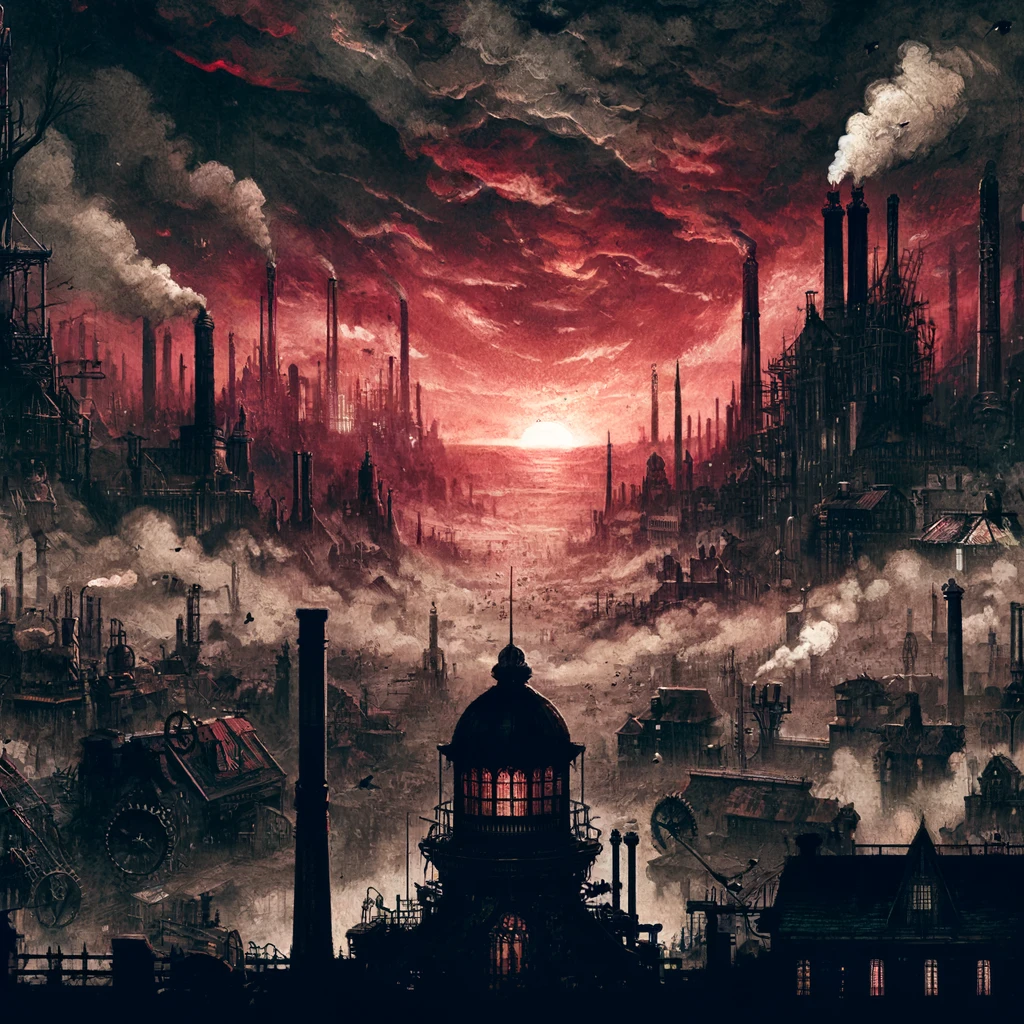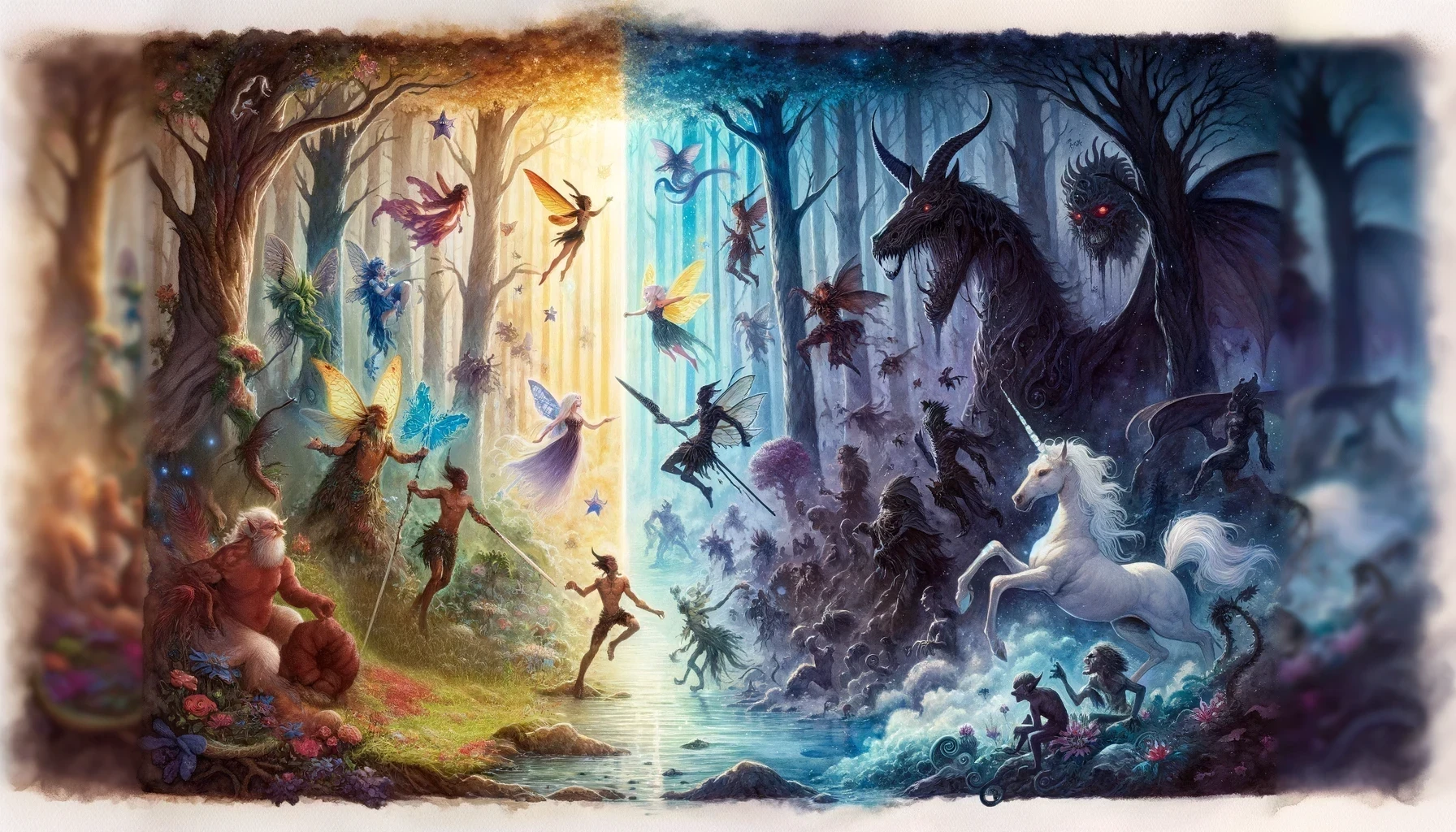top of page

The Clockwork Conspiracy
A busy steampunk cityscape scene



The Clockwork Conspiracy
A busy steampunk cityscape scene
1/4
D&D Melee
Melee
Definition: In Dungeons & Dragons (D&D), melee refers to close-ranged, physical combat, typically involving weapons like swords, axes, and maces, or unarmed strikes. It stands in contrast to ranged combat (using bows, crossbows, slings, or thrown weapons) and spellcasting.
Rules and Concepts: Several key mechanics and concepts in D&D relate to melee combat:
-
Reach: Most melee attacks can only target creatures within 5 feet, reflecting the space a character can strike with a typical hand-held weapon. Some weapons, like the glaive or pike, have a "reach" property, allowing attacks on targets 10 feet away.
-
Attack Rolls: To hit a target in melee combat, a player rolls a d20 and adds their character's Strength modifier (for most melee weapons) or Dexterity modifier (for finesse weapons), plus their proficiency bonus if they're proficient with the weapon. This total is compared against the target's Armor Class (AC) to determine if the attack hits.
-
Damage Rolls: When a melee attack hits, the player rolls damage dice based on the weapon used (for example, a longsword deals 1d8 damage). The character's Strength modifier (or Dexterity modifier for finesse weapons) is typically added to the damage.
-
Opportunity Attacks: When a creature leaves a character's reach, it provokes an opportunity attack, which is a special melee attack that the character can make as a reaction.
Character Abilities and Powers: Many class features, feats, and spells in D&D are tailored to enhance melee combat capabilities:
-
Extra Attack: Many martial classes, such as Fighters, Barbarians, Paladins, and some subclasses of other classes gain the ability to attack more than once when they take the Attack action on their turn.
-
Sneak Attack: A class feature for Rogues that allows them to deal extra damage when they have advantage on a melee attack roll or when an ally is within 5 feet of their target.
-
Divine Smite: Paladins can expend a spell slot to deal extra radiant damage on a melee hit, representing their divine power imbued in their attacks.
-
Rage: When Barbarians rage, they gain a bonus to melee damage rolls, among other benefits, making them formidable melee combatants.
-
Feats: Several feats enhance melee capabilities. For instance, the Great Weapon Master feat allows characters to deal massive damage at the cost of accuracy, while the Sentinel feat increases a character's control over the battlefield in melee.
-
Spells: Many spells, like booming blade or green-flame blade, are designed to enhance melee attacks. Spells like magic weapon or flame blade can create or improve melee weapons.
-
Fighting Styles: Classes like Fighter, Paladin, and Ranger can choose Fighting Styles to specialize their combat approach. Styles like Dueling, Great Weapon Fighting, and Two-Weapon Fighting directly enhance melee combat.
-
Monks and Unarmed Strikes: Monks are a unique melee class that often fights unarmed, using their Ki to enhance their strikes and gain special combat abilities. They treat their unarmed strikes as melee weapon attacks and can deal significant damage without a weapon.
Remember that campaign settings, adventures, or Dungeon Master rulings may alter or add additional context to these rules. Always consult your Dungeon Master (DM) for clarification if you're unsure.
Top Ten DMing Tips for Managing Melee Encounters
-
Vary Your Combat Terrain: Add complexity to melee encounters by using diverse terrains. Difficult terrain can slow advancement, obstacles can provide cover, and hazards such as pits or lava can add an extra layer of strategy.
-
Leverage Reach and Positioning: Utilize creatures that have a larger reach than the players or can control battlefield positioning. This encourages players to think more strategically about their movement and placement.
-
Mind the Action Economy: In D&D, outnumbering your opponent can often turn the tide of battle due to the action economy. When setting up melee encounters, consider the number of actions on both sides. Sometimes, many weak enemies can pose more of a challenge than one strong one.
-
Use Mixed Enemy Types: Don’t rely solely on melee enemies. A mix of ranged attackers, spellcasters, and melee fighters can make for a far more dynamic encounter and prevent your players from using the same tactics repeatedly.
-
Play Enemies Smart: Use tactics with your monsters. Intelligent enemies will target weaker party members, use the terrain to their advantage, or attempt to break up the party's formation.
-
Environment Interaction: Encourage players to interact with their environment during melee combat. Can they drop a chandelier on enemies, push them into a river, or knock over a statue to create a barrier? Reward creative thinking.
-
Use Monsters with Special Abilities: Some creatures have unique abilities that can grapple, knock back, or impose conditions on the PCs. These abilities can add an extra layer of challenge and excitement to melee combat.
-
Manage Resources: Remember that each encounter should drain some of the party's resources. This is particularly true for melee-focused characters who may rely on abilities that have limited uses per rest, like a Barbarian's rage or a Paladin's Divine Smite.
-
Narrate Descriptively: Keep combat interesting by narrating the actions, hits, and misses in a dynamic way. This can make melee combat feel more intense and satisfying, and help players visualize the scene.
-
Balance Challenge and Fun: While it's important to challenge your players, remember that the aim of the game is fun. If a player has a cool idea that bends the rules slightly, consider allowing it. If a combat is becoming a slog, don't be afraid to adjust on the fly. A good melee encounter is challenging, dynamic, and above all, enjoyable.
Remember, these are guidelines rather than hard and fast rules. Each group is unique, so feel free to tweak and adjust these tips to better suit your players' playstyles and preferences. The most important thing is that everyone at the table is having fun.
bottom of page




